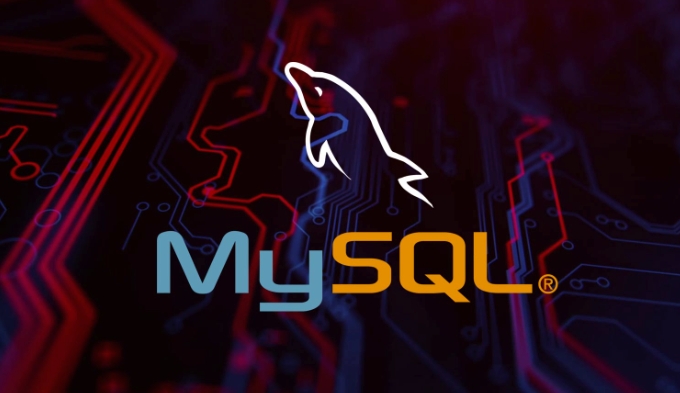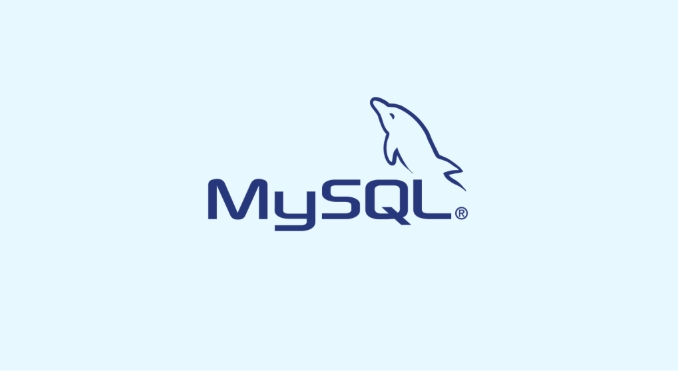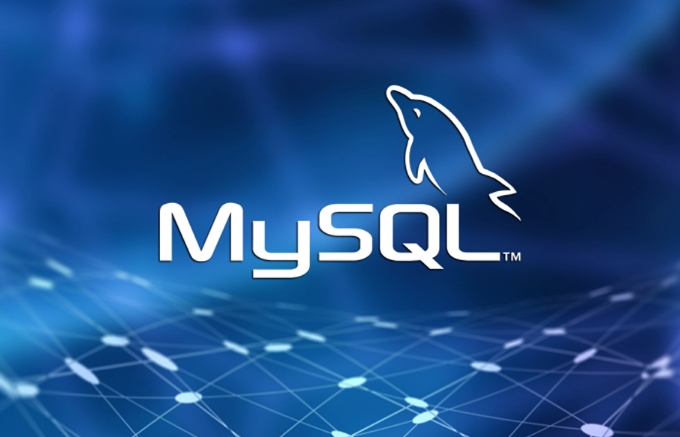Securing Your MySQL Server Against Common Vulnerabilities
Jul 07, 2025 am 02:06 AMThe following measures are required to strengthen the MySQL server: 1. Use strong passwords and restrict permissions, delete unnecessary users, avoid root remote login, and use GRANT and REVOKE to finely control access; 2. Close unnecessary services and ports, limit the access range of port 3306, and disable non-essential functions such as skip-networking and local_infile; 3. Regularly update the database version and enable log auditing, enable slow queries, errors, general and binary logs to track suspicious behavior; ensure database security by continuously paying attention to configuration, permissions, updates and monitoring.

As the core database system of many applications, MySQL server is crucial. If you don't pay attention to protecting it, you may be exploited by attackers to obtain sensitive data, tamper with information, and even control the entire server. Here are some practical practices to help you harden your MySQL server and prevent common security risks.

Use strong passwords and limit permissions
MySQL is usually installed by default with some default accounts or empty passwords, which can become attack portals. The first step is to make sure all users have strong passwords and only grant them the minimum permissions they need to complete the task.

- Check the user list regularly: Use
SELECT User, Host FROM mysql.user;to view all current users. - Delete unnecessary users: such as anonymous users (Anonymous) and test databases.
- Avoid using root Remote login: The root user has the highest permissions. If you must access remotely, it is recommended to create a dedicated account and limit its permissions.
In terms of permission management, you can use GRANT and REVOKE commands to finely control the access range of each user. For example:
GRANT SELECT, INSERT ON dbname.* TO 'user'@'host';
This can prevent an account from causing damage to the entire database.

Close unnecessary services and ports
MySQL listens on port 3306 by default, but if external access is not required, it should be restricted to local access only (binding to 127.0.0.1). This can be achieved by modifying bind-address in the configuration file.
- If remote connections must be allowed, a firewall should be used to restrict access to only specific IPs.
- Do not expose MySQL to the public network unless there is a very clear need and additional security measures are taken (such as SSL encryption, IP whitelist, etc.).
- Disable MySQL's "skip-networking" option (unless you do need to disable network access).
In addition, some non-essential functions and services should also be turned off, such as:
- Disable
local_infile: Prevent malicious files from injecting through LOAD DATA LOCAL INFILE. - Don't enable similar extension settings such as
allow_url_fopenunless necessary.
Regular updates and log audits
MySQL official releases security updates regularly to fix known vulnerabilities. Keeping the database version up to date is one of the important means of defending against attacks.
- Set up an automatic update mechanism or check official announcements regularly.
- Avoid using older versions that have been stopped supporting, they no longer receive security patches.
At the same time, turning on logging can help you track suspicious behavior:
- Enable slow query logs, error logs, and general query logs to help troubleshoot problems.
- Turning on binary logs (binlog) can be used to recover data and also helps analyze attack traces.
- Regularly review log content, especially when login failed frequently.
You can check whether the relevant logs are enabled in the following ways:
SHOW VARIABLES LIKE 'log_%';
If conditions permit, you can also use external tools to perform log analysis, such as ELK Stack or Graylog.
Basically that's it. MySQL security is not something that can be achieved overnight, but requires continuous attention to configuration, permissions, updates and monitoring. Some details seem simple, but they are often easily overlooked, thus becoming a breakthrough in attacks.
The above is the detailed content of Securing Your MySQL Server Against Common Vulnerabilities. For more information, please follow other related articles on the PHP Chinese website!

Hot AI Tools

Undress AI Tool
Undress images for free

Undresser.AI Undress
AI-powered app for creating realistic nude photos

AI Clothes Remover
Online AI tool for removing clothes from photos.

Clothoff.io
AI clothes remover

Video Face Swap
Swap faces in any video effortlessly with our completely free AI face swap tool!

Hot Article

Hot Tools

Notepad++7.3.1
Easy-to-use and free code editor

SublimeText3 Chinese version
Chinese version, very easy to use

Zend Studio 13.0.1
Powerful PHP integrated development environment

Dreamweaver CS6
Visual web development tools

SublimeText3 Mac version
God-level code editing software (SublimeText3)

Hot Topics
 How to install MySQL 8.0 on Windows/Linux?
Jun 11, 2025 pm 03:25 PM
How to install MySQL 8.0 on Windows/Linux?
Jun 11, 2025 pm 03:25 PM
The key to installing MySQL 8.0 is to follow the steps and pay attention to common problems. It is recommended to use the MSI installation package on Windows. The steps include downloading the installation package, running the installer, selecting the installation type, setting the root password, enabling service startup, and paying attention to port conflicts or manually configuring the ZIP version; Linux (such as Ubuntu) is installed through apt, and the steps are to update the source, installing the server, running security scripts, checking service status, and modifying the root authentication method; no matter which platform, you should modify the default password, create ordinary users, set up firewalls, adjust configuration files to optimize character sets and other parameters to ensure security and normal use.
 How to enable SSL/TLS encryption for MySQL connections?
Jun 11, 2025 pm 03:29 PM
How to enable SSL/TLS encryption for MySQL connections?
Jun 11, 2025 pm 03:29 PM
Enable MySQL's SSL/TLS encryption connection can effectively prevent data leakage. The specific steps are as follows: 1. Confirm that the MySQL version supports SSL, and check whether the return value is YES through SHOWVARIABLESLIKE'have_ssl'; 2. Prepare a PEM format certificate file (ca.pem, server-cert.pem, server-key.pem), which can be generated through OpenSSL or obtained from CA; 3. Modify the MySQL configuration file, add ssl-ca, ssl-cert and ssl-key paths in the [mysqld] section and restart the service; 4. Force the client to use SSL, and use CREATEUSER
 What is the default username and password for MySQL?
Jun 13, 2025 am 12:34 AM
What is the default username and password for MySQL?
Jun 13, 2025 am 12:34 AM
The default user name of MySQL is usually 'root', but the password varies according to the installation environment; in some Linux distributions, the root account may be authenticated by auth_socket plug-in and cannot log in with the password; when installing tools such as XAMPP or WAMP under Windows, root users usually have no password or use common passwords such as root, mysql, etc.; if you forget the password, you can reset it by stopping the MySQL service, starting in --skip-grant-tables mode, updating the mysql.user table to set a new password and restarting the service; note that the MySQL8.0 version requires additional authentication plug-ins.
 What is the MySQL binary log (binlog) and what is it used for?
Jun 11, 2025 pm 03:41 PM
What is the MySQL binary log (binlog) and what is it used for?
Jun 11, 2025 pm 03:41 PM
MySQL's binary log (binlog) is a binary log that records database change operations, and is used in scenarios such as data recovery, master-slave replication and auditing. 1. Binlog is a logical log file that records all operation events that modify data, such as INSERT, UPDATE, DELETE, etc., but does not include SELECT or SHOW query statements; 2. Its main uses include: data recovery through replay logs, supporting master-slave copying to achieve data synchronization, and used to analyze operation records to meet audit requirements; 3. Enable binlog requires setting log-bin, server-id, binlog_format and expire_logs_day in the configuration file.
 How to change or reset the MySQL root user password?
Jun 13, 2025 am 12:33 AM
How to change or reset the MySQL root user password?
Jun 13, 2025 am 12:33 AM
There are three ways to modify or reset MySQLroot user password: 1. Use the ALTERUSER command to modify existing passwords, and execute the corresponding statement after logging in; 2. If you forget your password, you need to stop the service and start it in --skip-grant-tables mode before modifying; 3. The mysqladmin command can be used to modify it directly by modifying it. Each method is suitable for different scenarios and the operation sequence must not be messed up. After the modification is completed, verification must be made and permission protection must be paid attention to.
 What is GTID (Global Transaction Identifier) and what are its advantages?
Jun 19, 2025 am 01:03 AM
What is GTID (Global Transaction Identifier) and what are its advantages?
Jun 19, 2025 am 01:03 AM
GTID (Global Transaction Identifier) ??solves the complexity of replication and failover in MySQL databases by assigning a unique identity to each transaction. 1. It simplifies replication management, automatically handles log files and locations, allowing slave servers to request transactions based on the last executed GTID. 2. Ensure consistency across servers, ensure that each transaction is applied only once on each server, and avoid data inconsistency. 3. Improve troubleshooting efficiency. GTID includes server UUID and serial number, which is convenient for tracking transaction flow and accurately locate problems. These three core advantages make MySQL replication more robust and easy to manage, significantly improving system reliability and data integrity.
 What is a typical process for MySQL master failover?
Jun 19, 2025 am 01:06 AM
What is a typical process for MySQL master failover?
Jun 19, 2025 am 01:06 AM
MySQL main library failover mainly includes four steps. 1. Fault detection: Regularly check the main library process, connection status and simple query to determine whether it is downtime, set up a retry mechanism to avoid misjudgment, and can use tools such as MHA, Orchestrator or Keepalived to assist in detection; 2. Select the new main library: select the most suitable slave library to replace it according to the data synchronization progress (Seconds_Behind_Master), binlog data integrity, network delay and load conditions, and perform data compensation or manual intervention if necessary; 3. Switch topology: Point other slave libraries to the new master library, execute RESETMASTER or enable GTID, update the VIP, DNS or proxy configuration to
 How to alter a large table without locking it (Online DDL)?
Jun 14, 2025 am 12:36 AM
How to alter a large table without locking it (Online DDL)?
Jun 14, 2025 am 12:36 AM
Toalteralargeproductiontablewithoutlonglocks,useonlineDDLtechniques.1)IdentifyifyourALTERoperationisfast(e.g.,adding/droppingcolumns,modifyingNULL/NOTNULL)orslow(e.g.,changingdatatypes,reorderingcolumns,addingindexesonlargedata).2)Usedatabase-specifi






